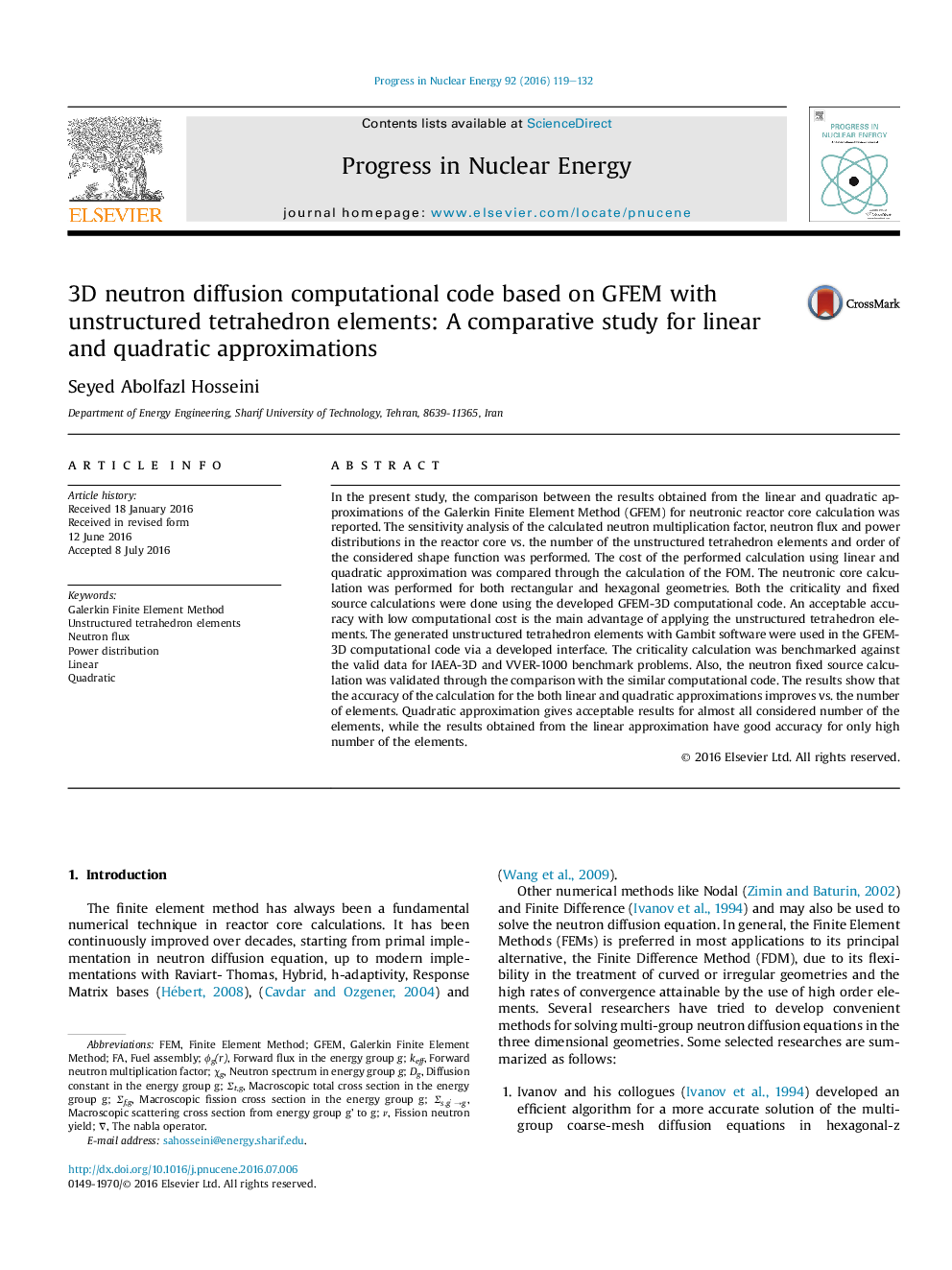| کد مقاله | کد نشریه | سال انتشار | مقاله انگلیسی | نسخه تمام متن |
|---|---|---|---|---|
| 1740277 | 1521746 | 2016 | 14 صفحه PDF | دانلود رایگان |

• We develop a 3D neutron diffusion solver based on GFEM.
• The spatial discretization is performed using unstructured tetrahedron elements.
• Both linear and quadratic approximations are considered in the calculation.
• GFEM-3D is applicable for both rectangular and hexagonal reactor cores.
• The results show that the GFEM-3D is suitable tool for static calculation.
In the present study, the comparison between the results obtained from the linear and quadratic approximations of the Galerkin Finite Element Method (GFEM) for neutronic reactor core calculation was reported. The sensitivity analysis of the calculated neutron multiplication factor, neutron flux and power distributions in the reactor core vs. the number of the unstructured tetrahedron elements and order of the considered shape function was performed. The cost of the performed calculation using linear and quadratic approximation was compared through the calculation of the FOM. The neutronic core calculation was performed for both rectangular and hexagonal geometries. Both the criticality and fixed source calculations were done using the developed GFEM-3D computational code. An acceptable accuracy with low computational cost is the main advantage of applying the unstructured tetrahedron elements. The generated unstructured tetrahedron elements with Gambit software were used in the GFEM-3D computational code via a developed interface. The criticality calculation was benchmarked against the valid data for IAEA-3D and VVER-1000 benchmark problems. Also, the neutron fixed source calculation was validated through the comparison with the similar computational code. The results show that the accuracy of the calculation for the both linear and quadratic approximations improves vs. the number of elements. Quadratic approximation gives acceptable results for almost all considered number of the elements, while the results obtained from the linear approximation have good accuracy for only high number of the elements.
Journal: Progress in Nuclear Energy - Volume 92, September 2016, Pages 119–132